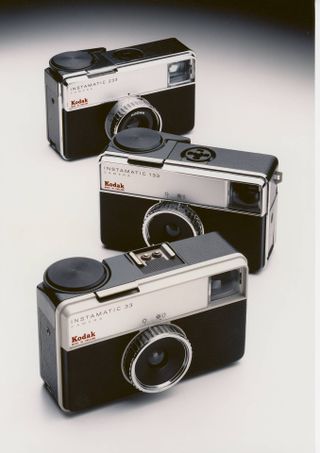KENNETH GRANGE: THE GODFATHER
Within the PDE course, we recently held our ‘Pichi Kichi’ presentations: 10 slides, 10 seconds, making up just over a minute and a half about a random designer picked blind from a hat. Within this random allocation I didn’t expect to pick out someone whose name meant so little to me, but who’s designs had been present in my life to the extent that Kenneth Grange’s have. I referred to a quote by Alyn Griffiths in my presentation calling Grange “The classically styled godfather of British modernism and industrial design” and I truly think this sums up his career. His repertoire of work within British culture is so all encompassing that even if, like me, you didn’t know the name Kenneth Grange, you already feel like you know him and his design language through his work.
I pointed out a few of his most notable designs in my presentation. His TX-1 taxi design is something almost all Londoners are familiar with and serves as a phenomenal example of how to modernise classic design. Contrasting this, his Kodak cameras and Kenwood kitchenaid are some examples of truly iconic designs which defined the future style and form for a whole range of products. However, as I stated in my presentation, I don’t think there is a better example of his influence than his design for the intercity-125 train. A train like this looks like nothing special to most people, me included, but that’s because even now, 50 years on, modern trains use and mimic this same design language. The sensation upon realising this was similar to that of the Eames chair when I first saw it compared to its predecessors (See my blog ‘Eames - The Architect and the Painter’). It’s not just the design itself, but the context within which it was made that defines great design. When a design is able to revolutionise the appearance of a product whilst defining a new and timeless aesthetic, that can be considered truly great design. Before the 125, trains practically still looked like steam engines so this design choice, this nose profile that Grange created, was truly revolutionary.




Something that I definitely didn’t have the time to go into properly within my presentation was Grange’s work within Anglepoise lighting company and the Pentagram design firm. He was one of the 5 founding members of Pentagram (hence the name) in 1972, a design firm with multiple offices across the world that is widely renowned as the largest and most influential graphic design agency in the world. The Pentagram design agency is renowned for developing strong brand identities, something that the Anglepoise lighting company, of which Grange was appointed creative director in 2003, is by no means short of. Within every facet of Grange’s career he has created these strong and coherent brand identities with the companies he has worked under, and I think these have somehow culminated in him even creating his own ‘British’ identity that speaks to so many people who have grown up around his designs and portfolio of work.
I often find myself turning to quotes from more eloquent writers and speakers than myself in order to express what I’m trying to say and I did exactly this to end my presentation. For me, this quote from an article from the Financial Times (article linked here) was exactly what realised for me the scope and influence of Kenneth Grange’s career. To have affected so many people with your work through so many facets of life, all encompassing the philosophy of ‘great design’ is an incredibly powerful thing…
“There was a time, at some point during the 1990s, when you could have lived a life almost entirely ensconced in a landscape of products designed by Sir Kenneth Grange. You might have been woken up by his Short & Mason alarm clock, had a shave using his Wilkinson razor, made tea in his Kenwood kettle and lit your first cigarette of the day using his Ronson lighter. And that was before you’d even got out of the house. From there you might have travelled on a Grange-designed train, or waited in a Grange-designed bus stop, or slotted a coin into his parking meter, then opened a door using one of his handles, hung your coat up on one of his hooks and signed a letter with his Parker Pen.”
